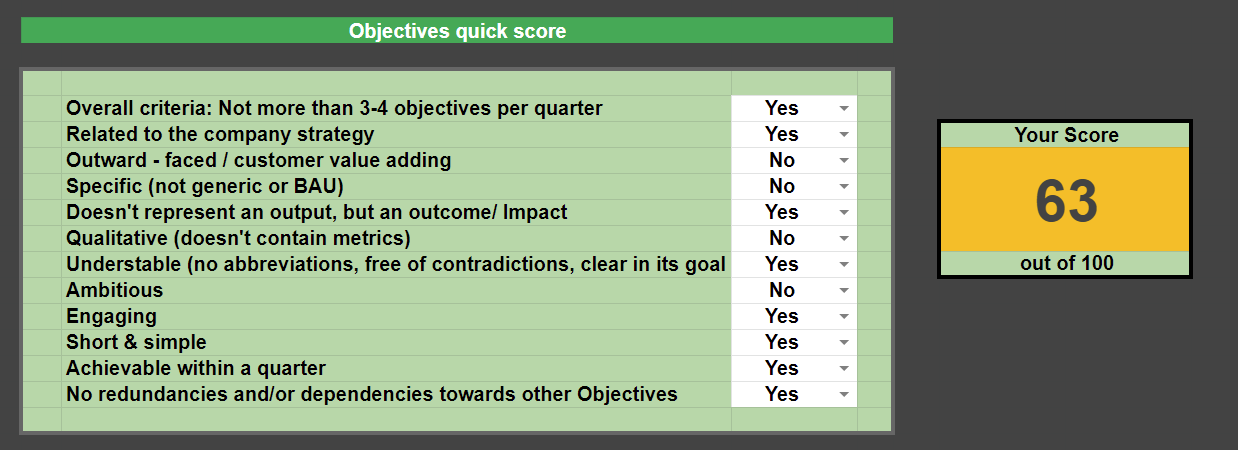Welcome to 💡Joan Agile by 👤Joan Lozano, the weekly publication where I write about Business Agility and Organisational Development.
I open my own experience and expertise to the entire world to support anyone facing the same challenges I met in the past.
Check the last articles you may have missed:
As Agile Coaches and Experts in OKRs, we spent a lot of time checking for individual teams, departments, and domain OKRs providing feedback. We did this for more than 2 years. We reached a point where 99% of the feedback we were giving was the same. We asked ourselves the question “Could we automate ourselves?”. The answer was yes, but no.
Training people about OKRs can seem a simple thing. Phrasing one of the leads responsible for setting up the company goals: “Come on, OKRs is not rocket science”. Indeed, we thought. Then, why it is so difficult for people to think of good goals?
The biggest issue behind OKRs was the mindset behind it. They are usually introduced to “align” people. When people say align, do they mean control? 😀 Jokes apart, for the success of OKRs the organisation should have a growth mindset and some experience in working in data-driven environments.
OKR quality check: the tool you need to help you write better OKRs
The tool we built was a simple Google Spreadsheet with some Yes/No questions. It has a section for Objectives and another one for Key Results in that way we can review them separately and give specific guidance on them.
As you can see in the image above, we searched for several attributes for the objectives. Also, the score on the right side is just for guiding you, as it’s not the same thing to check if it describes an outcome it’s short and simple. They have different weights for what we considered more important.
The score itself it’s not important, it just guides you on how close you are to a better-phrased OKR.
The same happens with the Key Result checker. Based on the answers people give to those specific questions it gives you a score on how good it is.
But it doesn’t stop there. It was not enough for us to share those guidelines and scores. We wanted to provide leads and teams with actionable feedback directly on the tool. That is why, based on the answers, we were populating a feedback area with examples and actionable ideas.
As an example, if the Objective was not customer-focused, that is the feedback:
Everything we do should be aimed at improving our customer experience. Outward facing Objectives represent goals with the biggest customer impact. Often they are not easy to discover but asking "Why?" very often helps you get there and will reveal a mighty Objective in the end. Ask yourself:
Why do we want/ need to do this?
Will our customers see a difference after completing this Objective?
How are we able to serve our customer needs better?
What would really enlighten our customers?
If we complete this, did we achieve something truly amazing?
Of course, this is not enough for the majority of companies to start with OKRs, the goal of this tool is to support the implementation and provide leads, teams and coaches something to make their conversations more meaningful.
We invite you to try the tool and leave your comments or feedback. It doesn’t seem to be rocket science, right? 🚀











